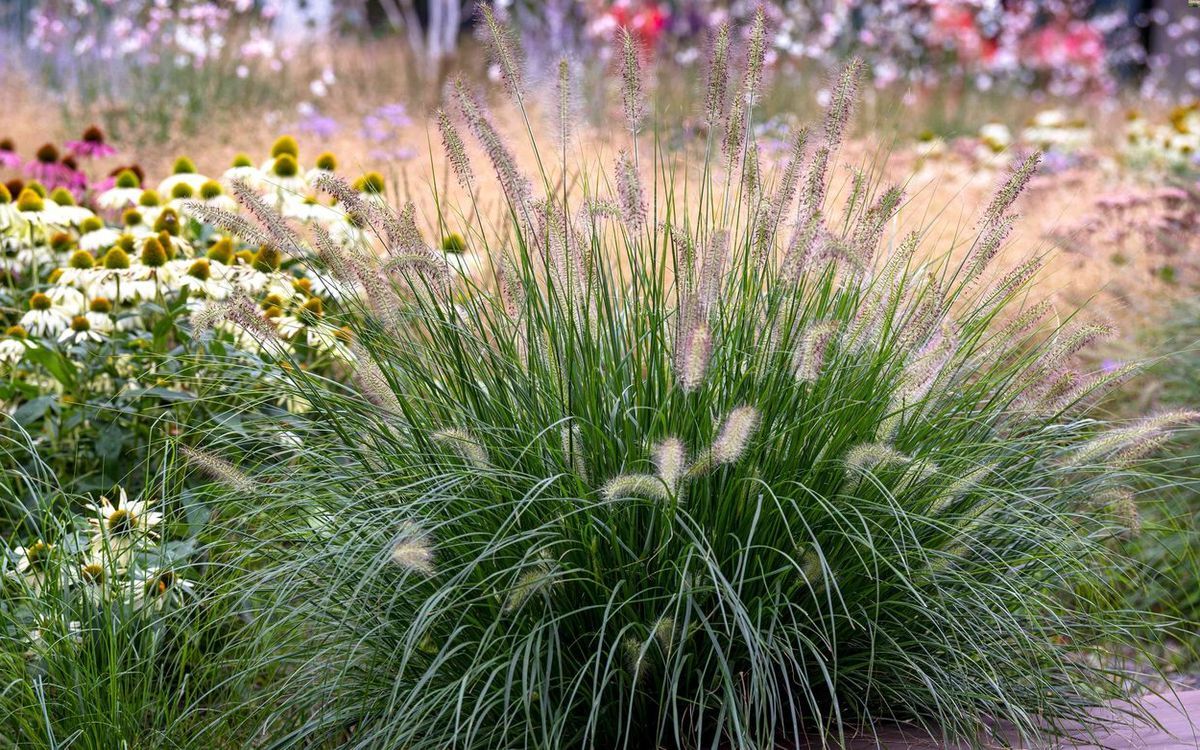
Pennisetum is a fascinating genus of grasses that includes both ornamental and agricultural varieties. Known for their feathery plumes and graceful appearance, these grasses are popular in gardens and landscapes. But did you know Pennisetum also plays a crucial role in agriculture? Varieties like Pearl Millet are vital food sources in many parts of the world. These grasses are not just pretty faces; they offer environmental benefits too. They help prevent soil erosion and can thrive in harsh conditions. Whether you're a gardener, farmer, or just curious, learning about Pennisetum can be both fun and informative. Ready to dive into some amazing facts? Let's get started!
What is Pennisetum?
Pennisetum, commonly known as fountain grass, is a genus of about 80 species of grasses. These grasses are popular for their ornamental value and are often used in landscaping. Let's dive into some fascinating facts about Pennisetum.
-
Pennisetum is native to tropical and subtropical regions around the world, including Africa, Asia, and South America.
-
The name "Pennisetum" comes from the Latin words "penna" meaning feather and "seta" meaning bristle, referring to the feathery bristles of the flower spikes.
-
Pennisetum species can range in height from a few inches to over 10 feet tall, depending on the variety.
Types of Pennisetum
There are many species and varieties of Pennisetum, each with unique characteristics. Here are some of the most notable ones.
-
Pennisetum alopecuroides, also known as Chinese fountain grass, is one of the most popular ornamental grasses used in gardens.
-
Pennisetum setaceum, or purple fountain grass, is known for its striking purple foliage and flower spikes.
-
Pennisetum glaucum, commonly called pearl millet, is an important cereal crop in many parts of the world.
Growth and Care
Pennisetum is relatively easy to grow and care for, making it a favorite among gardeners. Here are some tips and facts about its growth and care.
-
Pennisetum prefers full sun but can tolerate partial shade.
-
These grasses thrive in well-drained soil and can tolerate drought once established.
-
Pennisetum is generally low-maintenance, requiring minimal fertilization and watering.
-
Most Pennisetum species are perennial, meaning they come back year after year.
Uses of Pennisetum
Pennisetum is not just a pretty face; it has various uses in agriculture and landscaping.
-
Pennisetum is often used as a border plant in gardens due to its attractive foliage and flower spikes.
-
Some species, like Pennisetum purpureum (Napier grass), are used as fodder for livestock.
-
Pennisetum glaucum is grown as a grain crop in many developing countries.
-
The dense root system of Pennisetum helps in soil erosion control.
Environmental Impact
Pennisetum has both positive and negative impacts on the environment. Here are some key points to consider.
-
Pennisetum can become invasive in some regions, outcompeting native plants and disrupting ecosystems.
-
On the positive side, Pennisetum can improve soil health by adding organic matter and preventing erosion.
-
Some Pennisetum species are used in phytoremediation to clean up contaminated soils.
Fun Facts
Let's wrap up with some fun and lesser-known facts about Pennisetum.
-
Pennisetum flower spikes are often used in floral arrangements due to their unique texture and appearance.
-
The seeds of some Pennisetum species are edible and can be ground into flour.
-
Pennisetum is a favorite among pollinators like bees and butterflies.
-
In some cultures, Pennisetum is used in traditional medicine to treat various ailments.
-
Pennisetum can be grown in containers, making it a versatile option for small gardens and patios.
-
The feathery plumes of Pennisetum can change color throughout the season, adding dynamic interest to gardens.
-
Pennisetum is often used in xeriscaping, a landscaping method that reduces or eliminates the need for irrigation.
-
Some Pennisetum species have been used in biofuel research due to their high biomass production.
-
Pennisetum can be propagated by seed or division, making it easy to share with fellow gardeners.
-
The genus Pennisetum is part of the Poaceae family, which includes other important grasses like wheat, corn, and rice.
-
Pennisetum can tolerate a range of soil types, from sandy to clayey, making it adaptable to different environments.
-
The flower spikes of Pennisetum can last for several months, providing long-lasting beauty in the garden.
-
Pennisetum is deer-resistant, making it a good choice for gardens in areas with high deer populations.
-
Some Pennisetum species are used in traditional crafts, such as basket weaving.
-
Pennisetum can be used as a natural windbreak, protecting other plants from strong winds.
-
The dense foliage of Pennisetum provides habitat and shelter for small wildlife, such as birds and insects.
The Final Word on Pennisetum
Pennisetum, often known as fountain grass, is a versatile and attractive addition to any garden. Its graceful plumes and hardy nature make it a favorite among gardeners. This grass isn't just about looks; it also plays a role in erosion control and provides habitat for wildlife. Whether you're a seasoned gardener or a newbie, Pennisetum offers something for everyone. It's easy to grow, requires minimal maintenance, and can thrive in various climates. Plus, with so many varieties available, there's a Pennisetum for every garden style. From its aesthetic appeal to its practical benefits, this plant is a true garden gem. So next time you're planning your garden, consider adding some Pennisetum. You'll not only enhance your garden's beauty but also contribute to a healthier environment. Happy gardening!
Was this page helpful?
Our commitment to delivering trustworthy and engaging content is at the heart of what we do. Each fact on our site is contributed by real users like you, bringing a wealth of diverse insights and information. To ensure the highest standards of accuracy and reliability, our dedicated editors meticulously review each submission. This process guarantees that the facts we share are not only fascinating but also credible. Trust in our commitment to quality and authenticity as you explore and learn with us.
